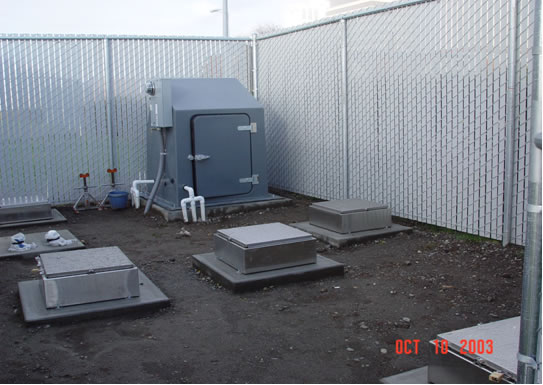Overview
The Delaney Park Array, with its six 3-component accelerometers at depths from the surface down through the near-surface soil column to 61m, is situated in downtown Anchorage, Alaska. Anchorage sits on top of the great Alaskan subduction zone and has been subjected to large damaging earthquakes in the past. The March 27th, 1964 (Good Friday), magnitude 9.2 great Alaska earthquake shook the ground for more than 4 minutes over a 50,000-square-mile region and caused 131 deaths.
The Delaney Park Array was deployed in September 2004 to provide the input ground motions to the nearby instrumented 'Atwood' building during an earthquake, in order to better understand the combined response of the soil and the structure.
The Atwood building (20 stories, 81m tall) is one of the first buildings to be fully instrumented under the Advanced National Seismic System (ANSS) effort, a Federal Government funded program to improve ground and structural recording of earthquake-induced shaking in high-risk urban areas. ANSS projects like this will provide engineers with critical answers as to how particular building types respond to strong ground shaking.


